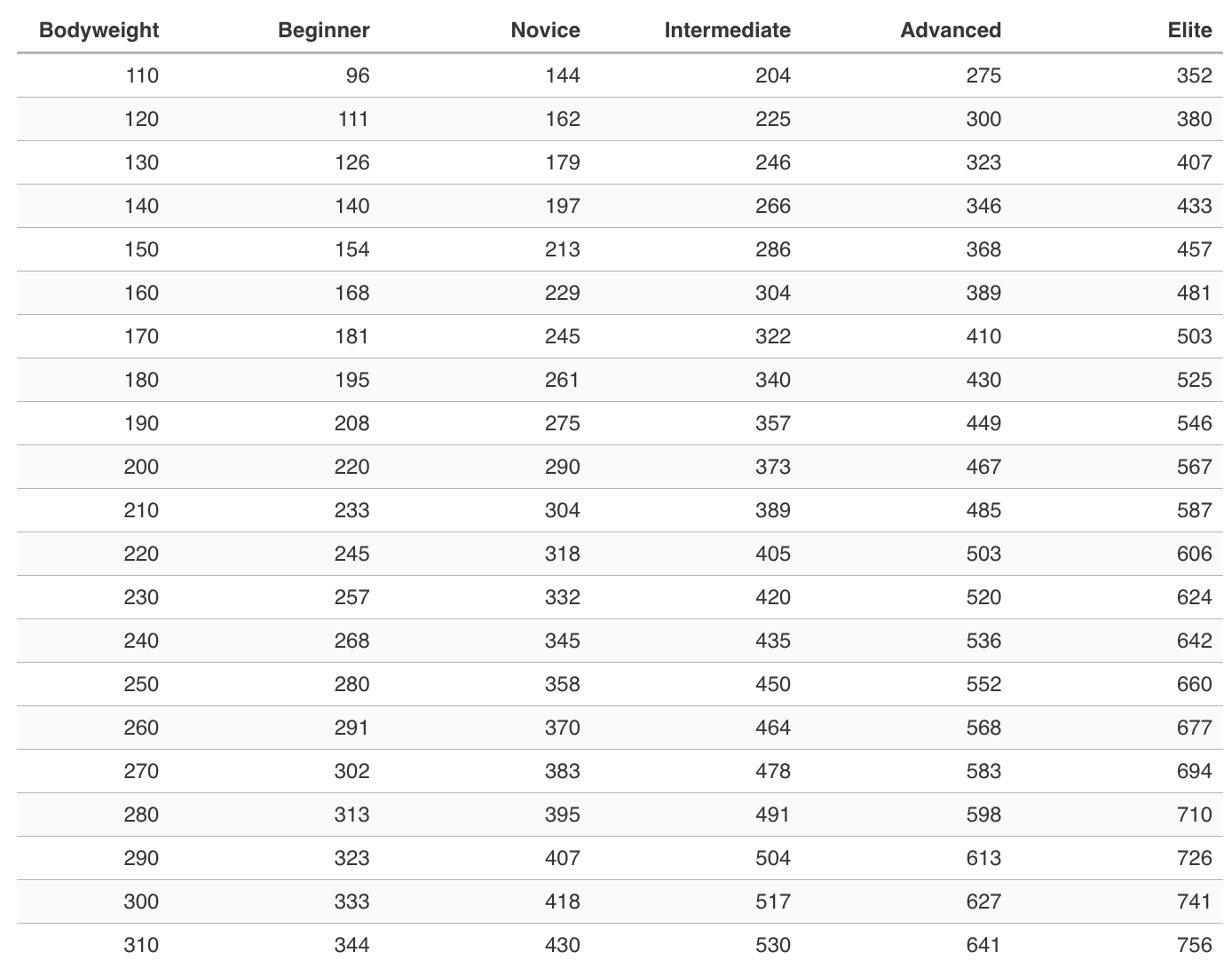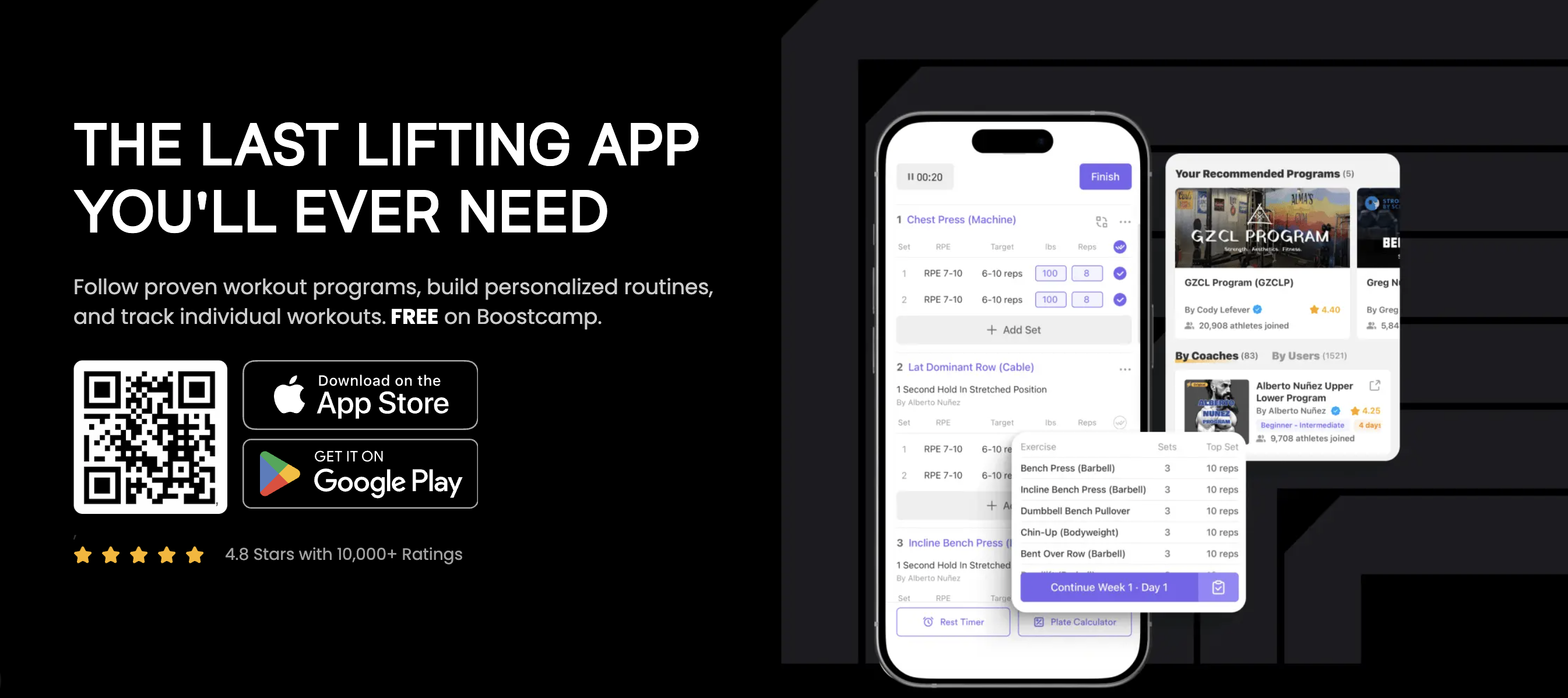The Average Deadlift by Body Weight
Written by the Boostcamp staff
Is your deadlift as strong as it should be?
As one of the big three compound lifts when it comes to your training routine, the barbell deadlift is a true testament to your strength, no matter if you are a bodybuilder or a powerlifter or you are just training to stay in shape and be the best version of yourself. The deadlift is technically a full body exercise as it recruits every muscle from the legs up to the shoulders, unlike a movement such as the bench press where the primary focus of the lift is your chest and triceps. That being said, when it comes to your deadlift numbers, who doesn’t want to be strong? A big deadlift really shows off your true power, but that said, what is the average deadlift by body weight?
Whether you are weighing in at 135 pounds or 500 pounds, our team at Boostcamp is going to take a look at the average deadlift for each body weight.
Average Deadlift by Body Weight

There are many different factors that you have to take into consideration when trying to determine your deadlift by body weight. One of the biggest things to consider is your skill level. For example, if you are just starting out in the gym, you more than likely will not be deadlifting triple your body weight for reps. On the flip side, if you are at a higher skill level and have been working towards increasing your deadlift through proper training routines, utilizing accessory movements to strengthen weak points, and really training hard with the utmost intensity, then maybe a double your bodyweight deadlift is feasible fairly early on.
You also have to take into consideration the training style that you follow. For example, if you are training for bodybuilding, you might be doing higher volume and high intensity training, but not necessarily testing one rep maxes or even getting close to it that often. That being said, you may not have a strong deadlift for your bodyweight. On the flip side, if you are training for powerlifting where you are doing heavy work and trying to work up and peak with a crazy one rep max.
To give you an idea of what your deadlift should look like by body weight, check out this graphic:

Image courtesy of Strength Level
How to Perform the Deadlift
When it comes to properly performing the deadlift itself, it is a bit more complicated than just picking up the weight off of the floor. The truth is, if you deadlift with improper form, you risk injuring yourself, which can keep you out of the gym for longer than you would like to be. That being said, good form is crucial. No matter what your fitness level is, here is how to do a proper conventional barbell deadlift:
Take a neutral position with your stance, placing your mid-foot right under the loaded barbell, and your feet slightly angled outward, planted hip width apart.
Grip the bar with an overhand grip (which is better with lifting straps) or a mixed grip, shoulder-width apart and retract your shoulder blades
Bend your knees until your shins touch the bar
With a neutral spine, or a flat back, lift your chest up and lower your glutes to an almost sitting position
Take a deep breath and hold it, brace your core, then pick the bar up off the ground (think of driving through your heels)
Continue pressing with your legs and thrusting your hips (almost like a vertical hip thrust) forward until you are fully stood up
Hold the weight for a second at the top of the movement, with locked hips and knees, then lower back to the starting position and repeat (do not bounce the weight)
Pros and Cons of the Deadlift
The deadlift is a very complex movement that can be very taxing on the body, but provides a good amount of strength and size gains. Let's take a look at the pros and cons of this movement.
Pros of the Barbell Deadlift
Full body exercise that helps with overall development
Functional movement that transfers to real world tasks very easily
Can progressively overload the entire body
Can be used to build mass as well as strength
Cons of the Barbell Deadlift
There is a high risk of injury
How to Increase Your Deadlift by Body Weight

There is no specific formula to increase your deadlift at each body weight. It does not matter if you are bulking or cutting or maingaining or whatever, the ways to increase the deadlift remain pretty much the same no matter your body weight. Let’s take a look.
Cues
In terms of increasing your deadlift, there are also plenty of cues to use when you are deadlifting that can help you remember certain aspects, and deadlift with better form. One is example is telling yourself to “paint your shins”, which reminds you to keep the barbell close to your body throughout the entire movement, dragging it along your legs as you lift for a full range of motion. Another good cue to use for your deadlift is “drive with your heels” reminding you to, well, drive the lift with your heels so you are getting good leg activation and not lifting entirely with your back.
Besides cues, there are plenty of items to keep in your gym bag that can help with deadlifting. The biggest one is a good weightlifting belt is great to use during heavy deadlifts, as it helps with core bracing and keeps your entire midsection tight during the lift for improved stabilization. You can also use weightlifting straps that help with grip, so you are able to do higher volume sets without worrying about the bar slipping out of your hands. Straps will also allow you to lift a little more weight than normal, so they are great for progressive overload. It is worth noting that straps are not allowed in competition!
Variations
Another good way to improve your deadlift is by doing different variations. One good variation is deficit deadlifts, which help to help train with a fuller range of motion, or even rack pulls to help with the lockout portion of the deadlift. Rack pulls will also allow you to pull heavier weight and get your body used to the overload.
Follow a Program
One of the most surefire ways of improving your deadlift by bodyweight is by following a program. A good lifting program will help you incorporate things like progressive overload as well as deload weeks, track your progress, and overall hold you accountable for what you do in the gym.
When looking for a program to increase your deadlift by bodyweight, keep in mind that there are plenty of good programs available on Boostcamp to help you make progress. A good program will keep you on track, making sure that you are making the most gains and maximizing your time in the gym. If you are looking to stay on track and continue with linear progression, then finding a good workout program is the key. Where do you look for a good workout program? Check out the Boostcamp App for some great programs.
Boostcamp is home to over 50 FREE workout programs that are written by some well known coaches, and consist of strength, hypertrophy, or functional fitness, or both, from the push pull legs program all the way to upper lower, there are so many programs to choose from that can help fit your needs. However, with Boostcamp, you don’t have to just follow a pre-written program (although each program is written by a professional), you also can create your own program as well, and track your progress to make sure you are on the right track. That being said, when you are looking to incorporate some serious training to further your progress on your deadlift by bodyweight, then check out Boostcamp.
Wrap Up
Overall, increasing your deadlift by body weight is not something that has to be overly complicated. Sure, the movement has a high risk of injury, but when performed properly and you truly maximize your potential, increasing your deadlift by body weight is easy.
How much can you deadlift?
Be sure to follow Boostcamp on Instagram and subscribe on YouTube!


